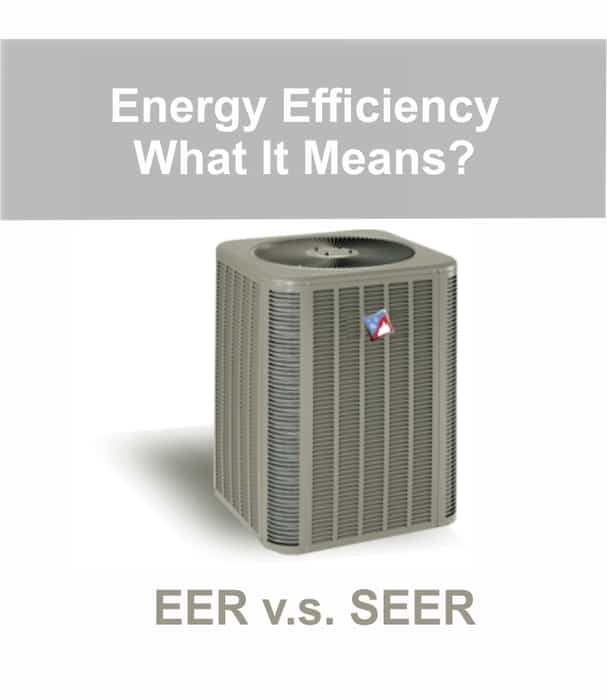Energy Efficiency Rating, What It Means?
Two of the more commonly used energy efficiency ratings for the cooling performance of air conditioners and heat pumps are the Energy Efficiency Ratio (EER) and Seasonal Energy Efficiency Ratio (SEER).
These ratings can be used to compare energy efficiencies for different models of equipment. What do these ratings mean, and what is the main difference between EER and SEER?
To put it simply, EER and SEER are used to express the ratios of output to input for the cooling system. As such, a more efficient cooling system will have higher EER and SEER ratings.
The fundamental difference between EER and SEER is that EER tells you the energy efficiency of a system at one set of operating conditions, whereas SEER reflects the overall efficiency of the system on a seasonal basis.
How is the Energy Efficiency Ratio (EER) calculated?
EER is the average rate of space cooling (in BTU/H), divided by the power input (in watts) at a given set of operating conditions. For example, a 16 EER-rated air conditioner delivers cooling at the rate of 16 BTU/H for every watt of input power at the specified rated conditions.
Most air conditioner and heat pump manufacturers in North America participate in AHRI’s voluntary certification program and ANSI/AHRI 210/240 tested and certified EER ratings based on 80 F indoor temperature and 95 F outdoor air temperature when systems are running at full load.
For instance, when a manufacturer advertises 14 EER-rated air conditioner, it implies that the system can cool down a conditioned space at the rate of 14 BTU/H for every watt of input power when it is tested for full operation at 80 F indoor and 95 F outdoor air temperature. EER does not tell you about the overall performance of the unit over a cooling season.
Find out what other Ottawa homeowners are saying about us as their local HVAC company.
What is the SEER rating?
To express the annual performance of an air conditioner or heat pump, SEER is used. SEER is the total heat removed during the annual cooling season, in BTU, divided by the total electrical energy consumed, in watt-hours (w*h), by an air conditioner or heat pump over the same season.
In other words, an air conditioner with 18 SEER is expected to remove 18 BTU of heat annually for every watt-hour of electrical energy consumed over the cooling season. The higher SEER value indicates that the air conditioner or heat pump operates more efficiently over the cooling season.
Does SEER Change Over Time?
It should be noted that EER and SEER are measured and calculated strictly under laboratory settings, and these lab testing conditions may not be the true representation of the actual operating conditions in the field. This may account for discrepancies between manufacturers’ published EER and SEER, and actual field performance ratings. To put this more simply, the manufacturer’s homeowner’s manual, recommends having an annual maintenance and inspection done on your cooling system.
Most common problems with air conditioners over time, they may have dirt built up or even a slight gas leak gone undetected. When a technician performs a maintenance inspection they can manually see if the unit is working efficiently using their gauge. If any leaks or deficiencies are detected and corrected, it can drastically improve your air conditioner’s Seasonal Energy Efficiency Rating.
NOTE To Reader:
Be sure to annually tune up your AC for the best possible performance plus savings on your utility bills.

